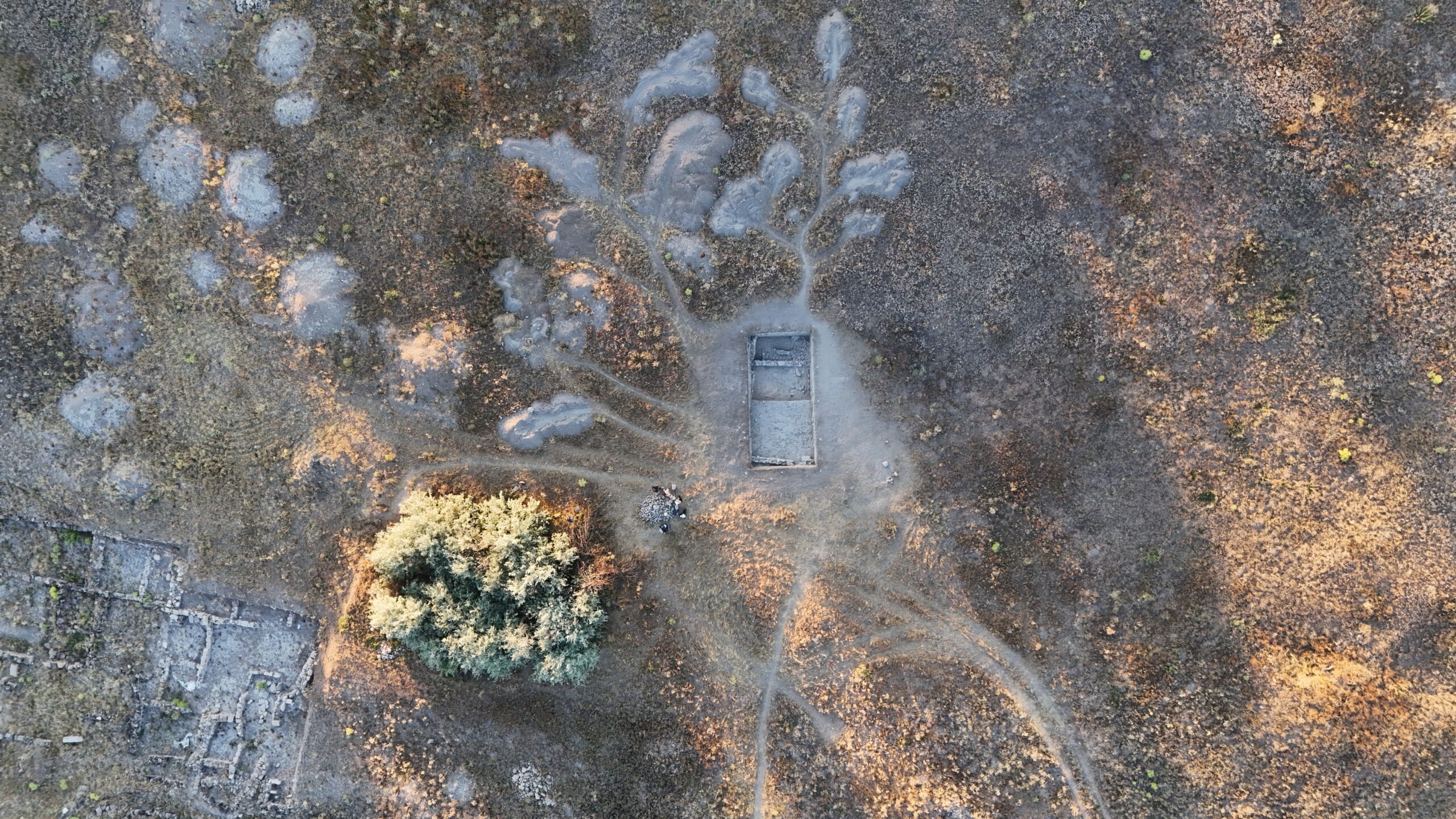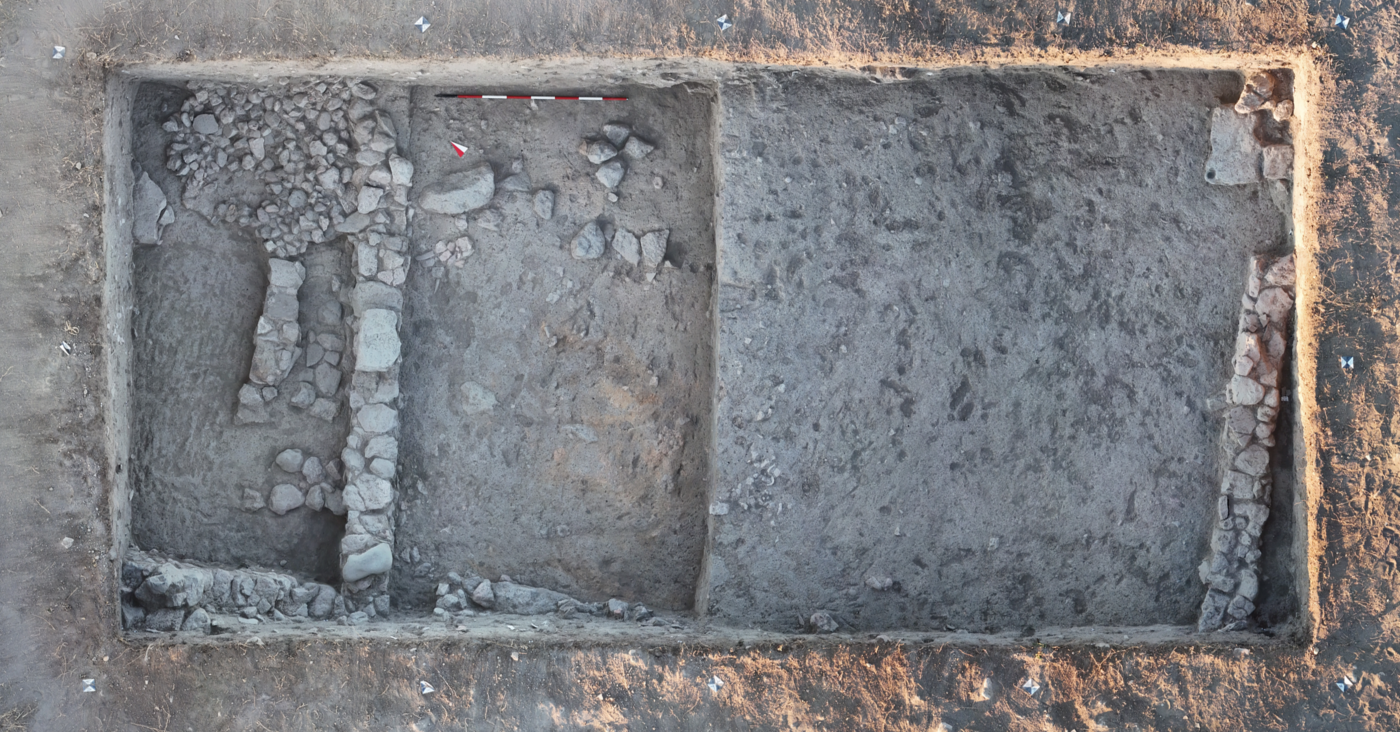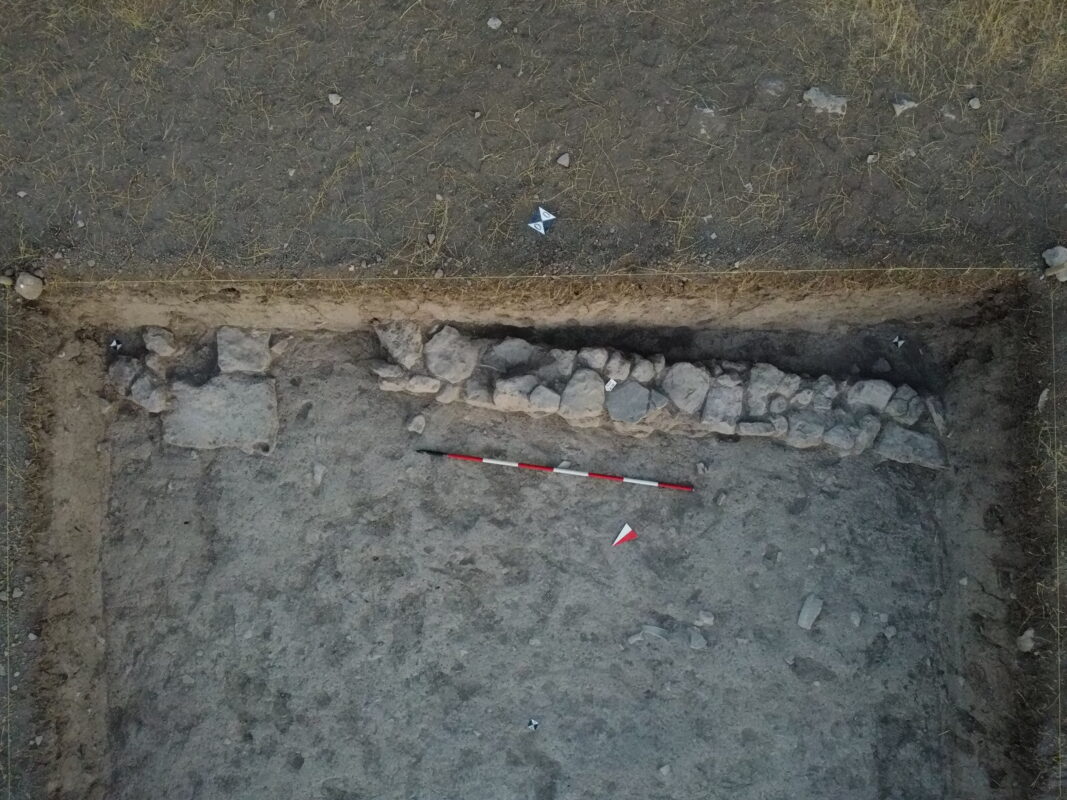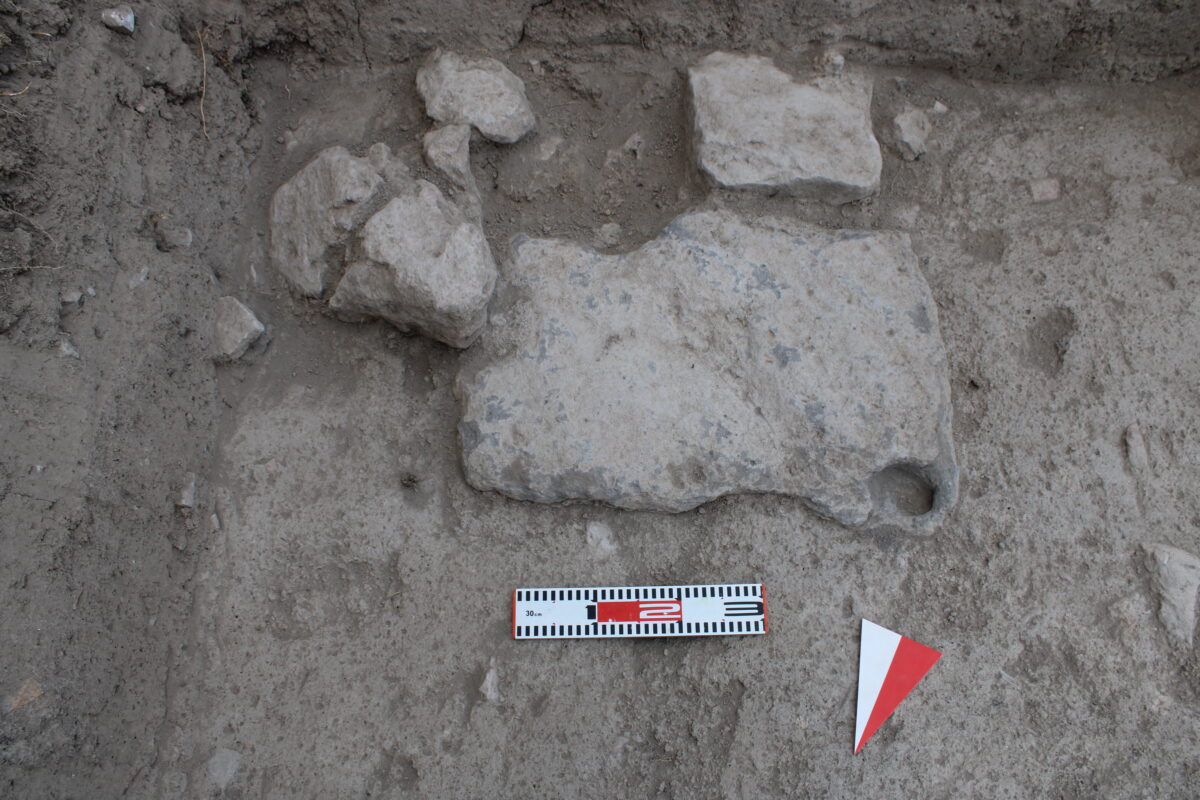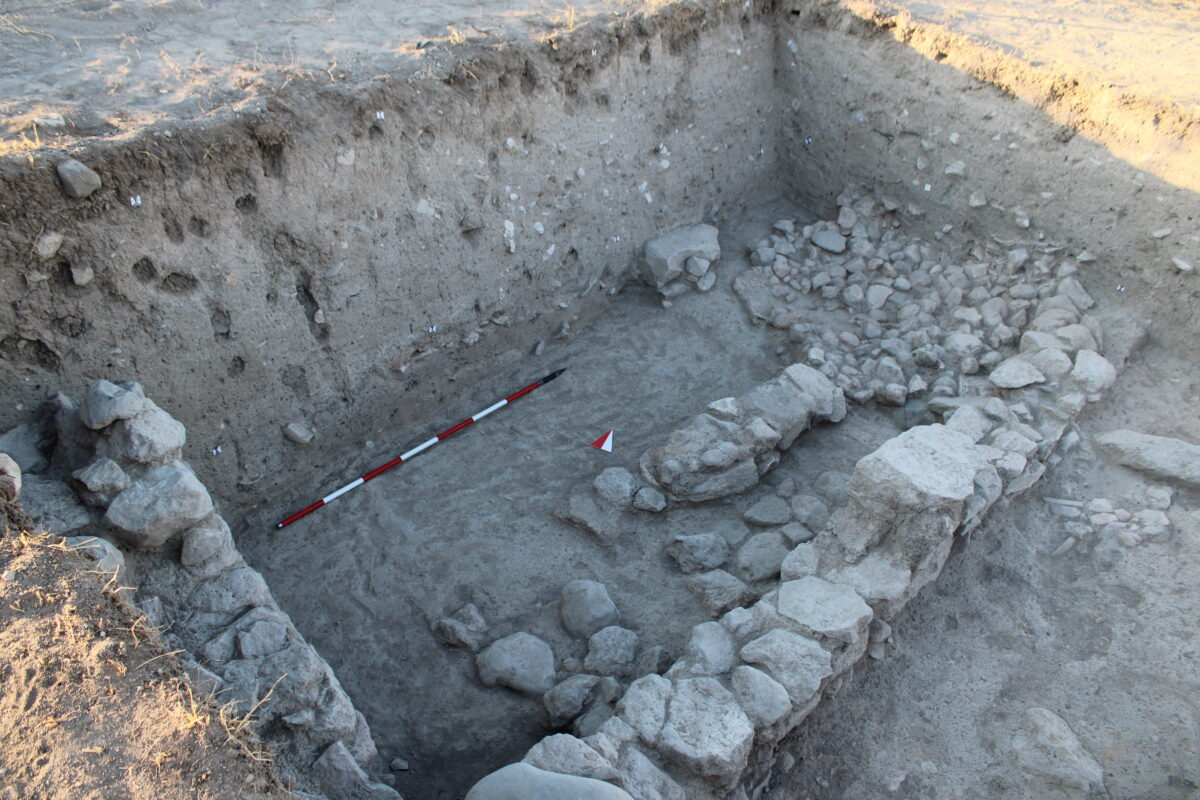Kültepe/Kanesh Lower Town
The lower city, so far investigated in its northeastern portion, housed the dwellings of Assyrian merchants during the Middle Bronze Age and must have, in antiquity, surrounded the entire hill. The houses of the lower city were grouped into irregular blocks. The rectangular buildings, usually consisting of two rooms, had stone foundations, mudbrick walls, and compacted earth floors, partially covered by stone slabs or organic mats to prevent moisture.
The PAIK research focused on the northern sector of the lower city, which had not yet been investigated by the Turkish excavations. Below what appears to be a sporadic recent occupation, characterized by dry stone walls and circular installations, investigations revealed two distinct architectural phases dating to the Middle Bronze Age.
The earliest phase consists of a room bounded by two stone walls. Inside, a large circular installation made of stones and pebbles was uncovered, containing fragmented ceramic material mixed with animal bones and ash, interpreted as the collapse of a domed domestic oven. Another rectangular installation is connected to the oven, adjacent to one of the perimeter walls and bordered by a low stone wall. This second installation, paved with juxtaposed stones, has been interpreted as a basin likely used in conjunction with the oven. South of this room lies an open space where traces of hearths and other modest fire installations are evident. These elements suggest that the area belonged to a domestic-productive complex typical of the lower city’s occupation during this phase (Phase Ib).
The more recent architectural phase consists of a large open area bounded on its southern edge by a wall made of stone blocks and pebbles, identified near the southern section. The wall is interrupted by a threshold, made of a horizontally laid stone block pierced with a socket for door hinges, suggesting that the rest of this building is located further south. In the northern area, an expansive open space likely served as a courtyard where mixed material and stone debris were scattered across the surface. The stratigraphic sequence and preliminary study of diagnostic materials suggest that the most recent phase identified corresponds to the phase known as “Lower City, Phase Ia,” currently only documented through the excavation of burials and generally poorly understood.


